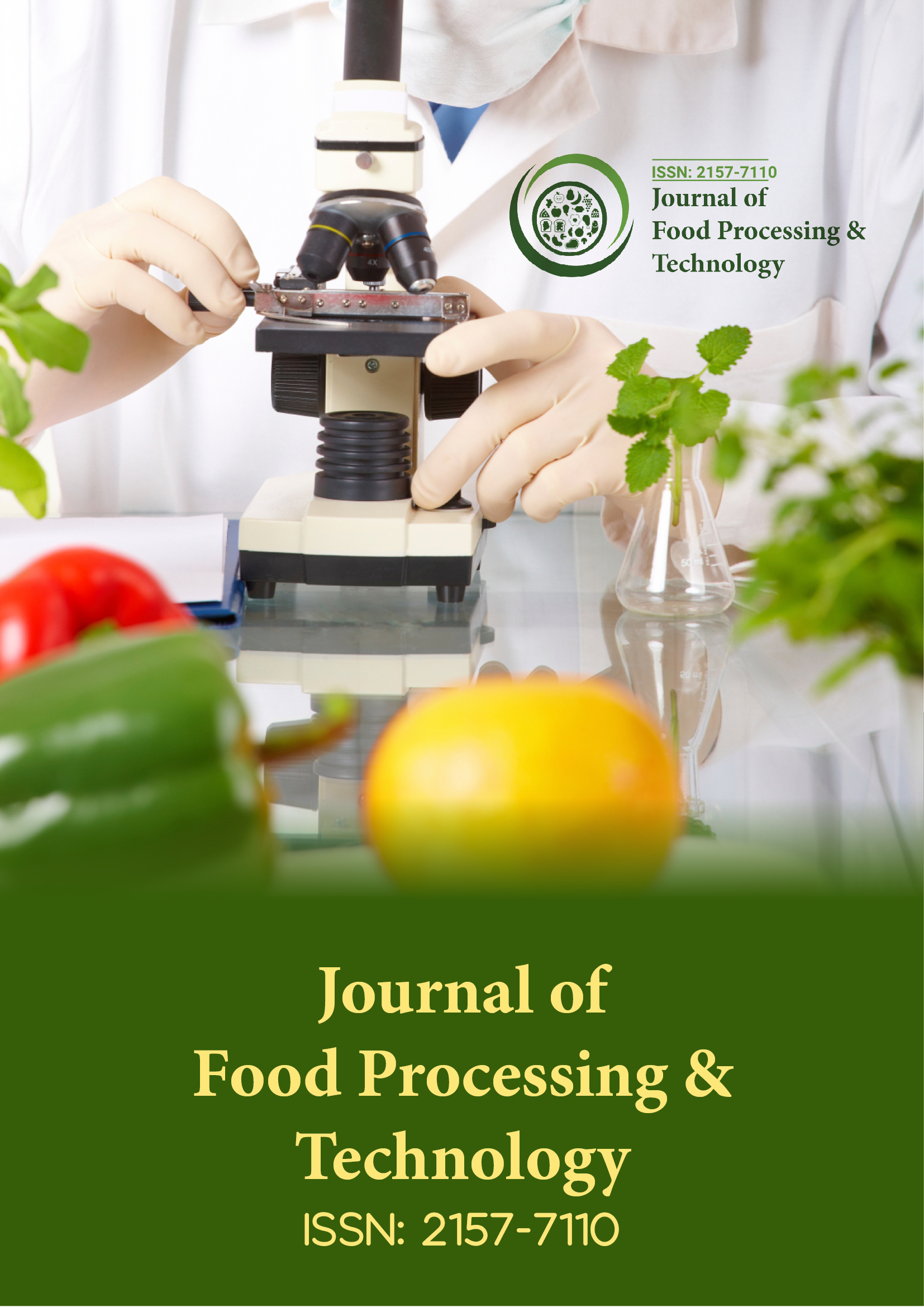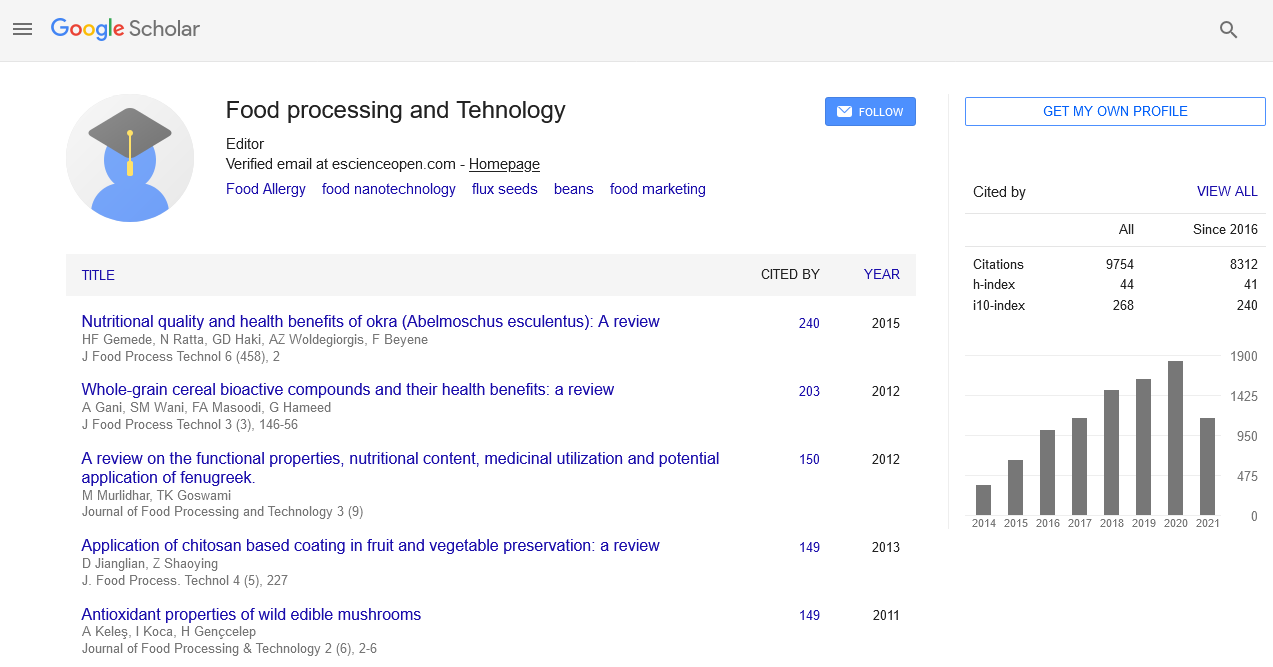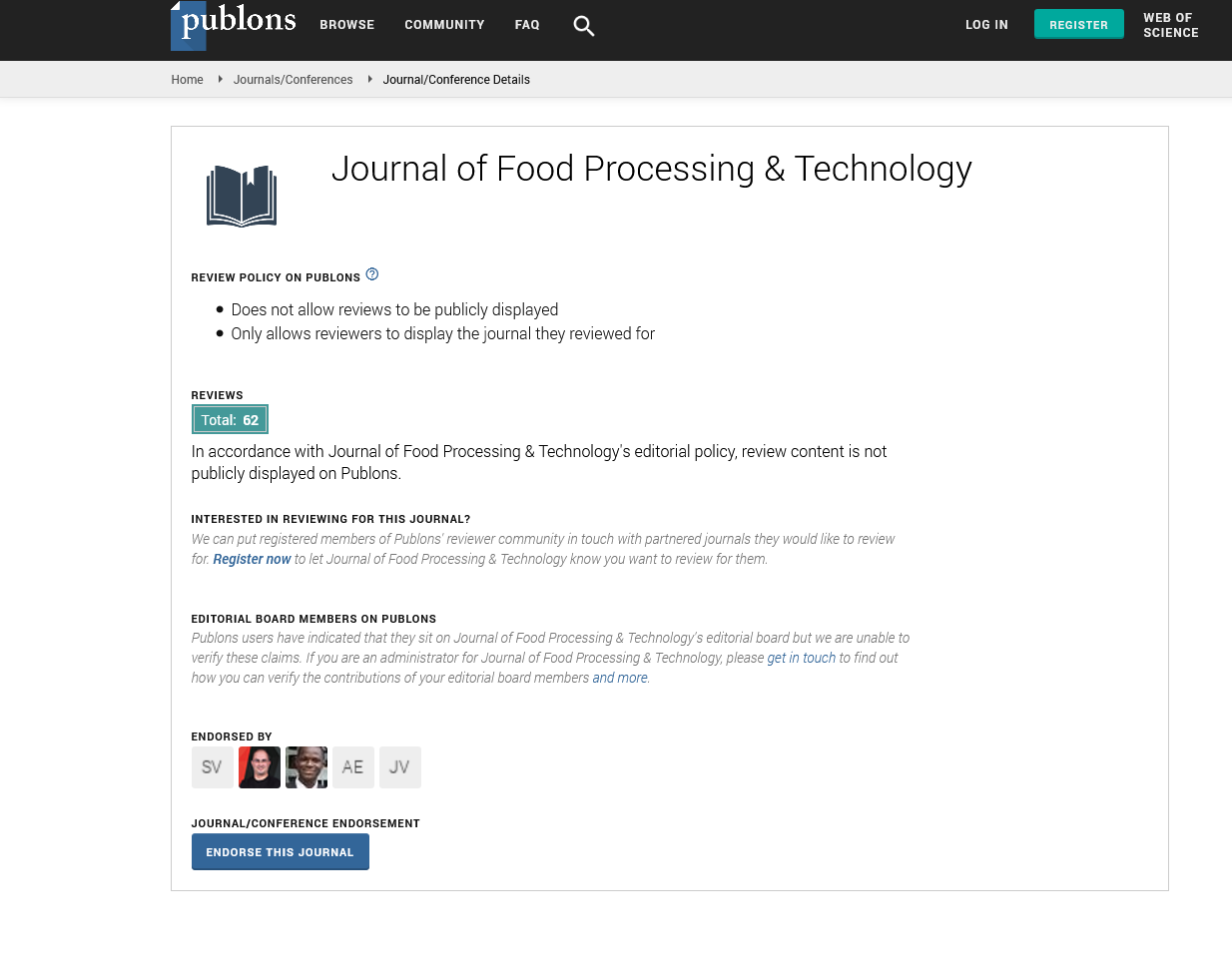Indexed In
- Genamics JournalSeek
- Academic Keys
- JournalTOCs
- China National Knowledge Infrastructure (CNKI)
- Access to Global Online Research in Agriculture (AGORA)
- Centre for Agriculture and Biosciences International (CABI)
- RefSeek
- Directory of Research Journal Indexing (DRJI)
- Hamdard University
- EBSCO A-Z
- OCLC- WorldCat
- Scholarsteer
- SWB online catalog
- Publons
- Euro Pub
- Google Scholar
Useful Links
Share This Page
Journal Flyer

Open Access Journals
- Agri and Aquaculture
- Biochemistry
- Bioinformatics & Systems Biology
- Business & Management
- Chemistry
- Clinical Sciences
- Engineering
- Food & Nutrition
- General Science
- Genetics & Molecular Biology
- Immunology & Microbiology
- Medical Sciences
- Neuroscience & Psychology
- Nursing & Health Care
- Pharmaceutical Sciences
Opinion Article - (2023) Volume 14, Issue 12
Exploring Additive Dynamics: Biogenic Amine Production in Food and the Role of Synthetics and Naturals
Fatima Gregory*Received: 27-Nov-2023, Manuscript No. JFPT-23-24449; Editor assigned: 30-Nov-2023, Pre QC No. JFPT-23-24449 (PQ); Reviewed: 14-Dec-2023, QC No. JFPT-23-24449; Revised: 21-Dec-2023, Manuscript No. JFPT-23-24449 (R); Published: 28-Dec-2023, DOI: 10.35248/2157-7110.23.14.1079
Description
The food industry has witnessed a surge in the use of additives, both synthetic and natural, to enhance the flavor, appearance, and shelf life of products. However, this increased reliance on additives has sparked concerns about their potential impact on the production of biogenic amines in food. Biogenic amines are compounds formed by the breakdown of amino acids and are naturally present in various foods. Some biogenic amines, such as histamine, tyramine, and putrescine, can have adverse effects on human health when present in high concentrations. This article explores the intricate relationship between synthetic and natural additives and their influence on biogenic amine production in food products.
Synthetic additives
Synthetic additives, including preservatives, colorants, and flavor enhancers, are commonly used in the food industry to improve the overall quality and safety of products. However, certain synthetic additives have been linked to increased biogenic amine production. For example, studies have shown that certain preservatives, such as sulfites, can contribute to the formation of biogenic amines through complex chemical reactions during food processing and storage. Understanding the mechanisms by which synthetic additives interact with food components to influence biogenic amine formation is significant for ensuring the safety of processed foods.
Natural additives
On the other hand, natural additives, often derived from herbs, spices, and other plant sources, are perceived as healthier alternatives to their synthetic counterparts. However, the impact of natural additives on biogenic amine production is not well documented. Some natural additives, like those rich in polyphenols, have been shown to possess antimicrobial properties that can potentially inhibit the growth of biogenic amine-producing microorganisms. Exploring the dual role of natural additives in both enhancing food quality and mitigating biogenic amine formation is essential for striking a balance between health and flavor in food products.
Factors influencing biogenic amine formation
Several factors contribute to the production of biogenic amines in food, and the interplay between additives and these factors is complex. The type of food matrix, processing methods, storage conditions, and the microbial population present all play pivotal roles in determining the final biogenic amine content. Synthetic additives can alter the pH, water activity, and nutrient availability in a food matrix, creating an environment conducive to the growth of biogenic amine-producing microorganisms. Similarly, natural additives may interact with food components in ways that either promote or inhibit biogenic amine formation. Understanding these multifaceted interactions is critical for developing strategies to control biogenic amine levels in foods.
Regulatory landscape
Given the potential health risks associated with elevated levels of biogenic amines, regulatory bodies have established guidelines and maximum limits for their presence in certain food categories. The impact of synthetic and natural additives on biogenic amine production has prompted a reassessment of these regulations. As our understanding of these interactions evolves, regulatory frameworks may need to be updated to ensure that food additives are used safely without compromising consumer health.
The relationship between synthetic and natural additives and biogenic amine production in food products is a complex and dynamic field that requires continued research and scrutiny. Striking a balance between the desire for flavour and safe food products necessitates a thorough understanding of the mechanisms by which additives influence biogenic amine formation. As the food industry continues to innovate, it is essential to consider the potential impact of additives on food safety and human health. By addressing these challenges, we can develop strategies to optimize the use of additives in a way that enhances the overall quality of food products while minimizing the risks associated with biogenic amine production.
Citation: Gregory F (2023) Exploring Additive Dynamics: Biogenic Amine Production in Food and the Role of Synthetics and Naturals. J Food Process Technol. 14:1079.
Copyright: © 2023 Gregory F. This is an open access article distributed under the terms of the Creative Commons Attribution License, which permits unrestricted use, distribution, and reproduction in any medium, provided the original author and source are credited.


